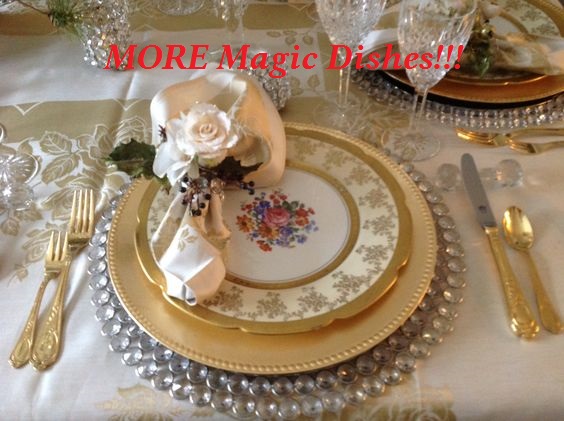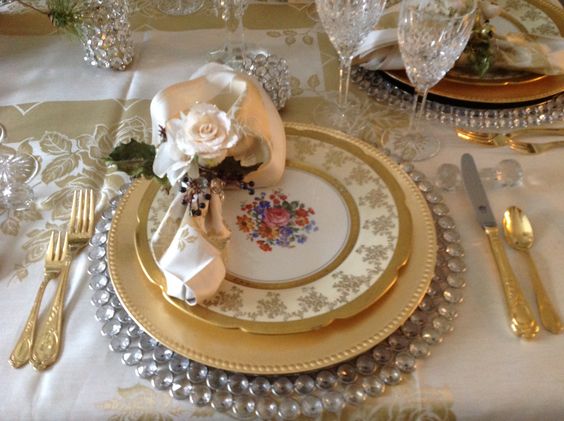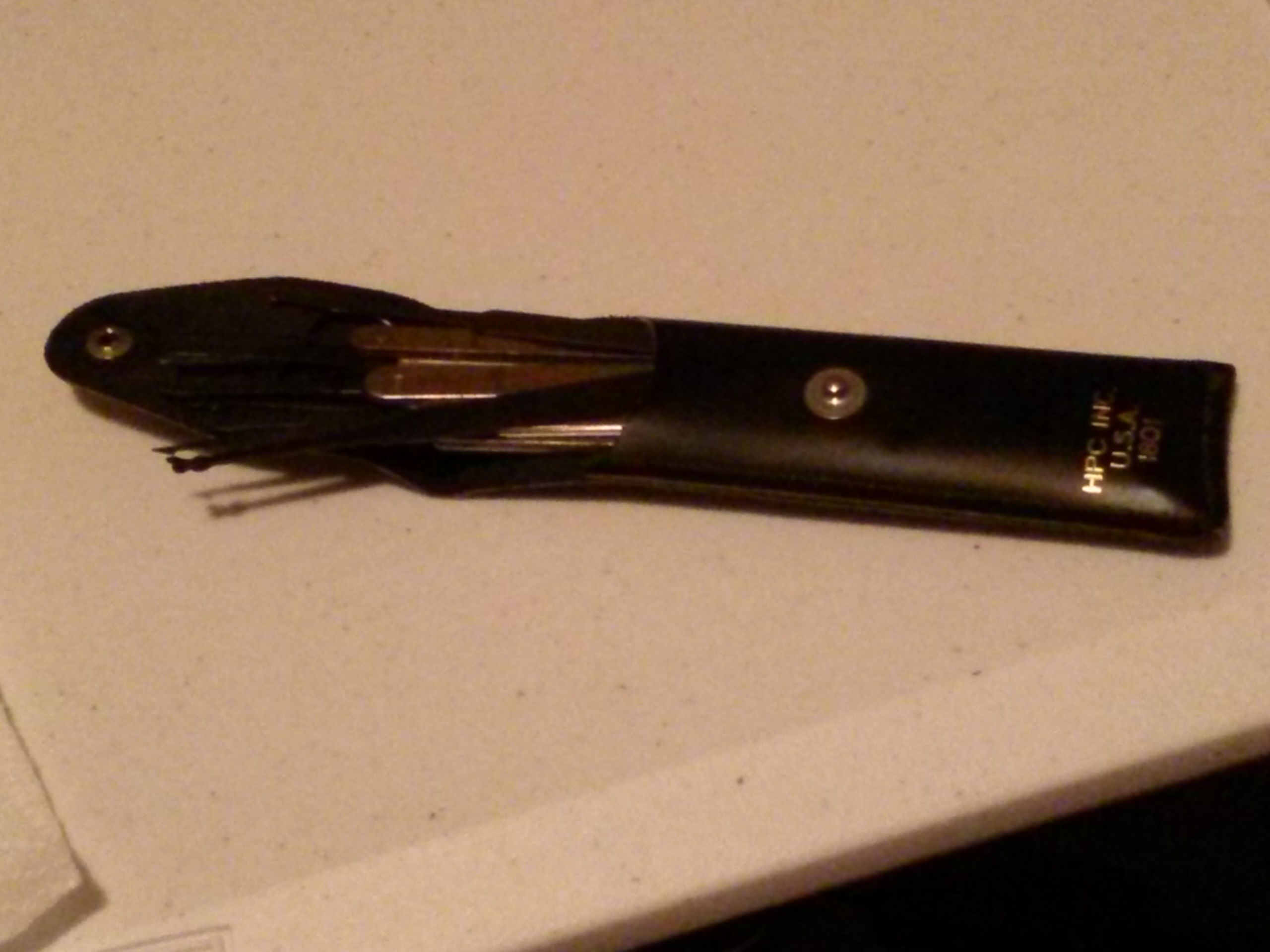Yesterday, I wrote about magic dishes that neutralize poison.
Today, I present a list of different abilities sets of magic dishes might have.
- Neutralize Poison -Cursed will poison those who use them
- Neutralize Disease* – Cursed will Cause Disease
- Healing – from cure light wounds to total healing and regeneration.
- Self Cleaning Dishes – Either wipe/scrape clean, or they grow legs and take themselves to the wash bin. (Think sorcerer’s apprentice….)
- Information Dishes – Dishes with various information gathering qualities. Clairaudience, clarivoyance, ESP, telepathy, etc. that allows the owner of the dishes to learn something from the guests using the dishes.
- Transmutation Dishes – The next person to eat an identical meal off the same dishes takes on the appearance of the prior person. This will last until they eat another identical meal from the same dishes. Imagine the problem of a broken or missing dish!
- Polymoph Dishes – These dishes will polymorph those who eat off them into the creature or object in the artwork on the dishes.
- Raise Dead – Not useful for the dead, but a way to deal with the undead. Only helpful if the undead eats from the dishes. Only undead that eat can be affected.
- Destruction – Death, slay living, finger of death, power word kill, disintegrate, etc. Whoever eats or drinks from these dishes….
- Teleportation – Matching sets of dishes that teleport you to the location of the twinned set. Some sets have a third (or extra set) that one carries and allows to go to any of the others in the set.
Special variation allows teleporting within a chain of dishes. Some chains require a one way flow, that is, one can only go forward or back one set in the chain. Other chains allow going to the location of any dish in the set, however, if the name, location, or other keyed descriptor is not named when the pre-teleport feeling comes on, the location is random.
Obviously, the dishes must be taken to the desired location, via normal travel, or other means.
Pre-Teleport Feeling: Euphoria, Nausea, Itching, Sneezing, Flatulence, Blindness, Hot, Cold, flashes of light, super abundance of floaters in the eyes, etc.
NOTE: Sets lost on the bottom of the sea, or in a dragon’s lair could prove interesting. - Abilities – Those who eat from them gain one point of the specified ability. This could be the primary ability of the class, a specified ability, or a random ability. The same set only works once on an individual.
- Wishes – Very rare, just another way to store wishes. Requires eating off the set and making a wish. The number of wishes will be finite.
- Permanency – Makes the next spell a spell caster does permanent, if it makes sense. This will allow a finite number of such castings.
- Nystul’s Magic Aura – Introduce a set and this can be the next set your players find.
- Ability/Class Stealing/Swapping – Eating the same meal from the same plate as the prior person will allow stealing from them or trading your abilities with theirs. A powerful wizard who knows someone else is more intelligent might steal or swap intelligence wit them. An assassin who really needs to do well in a job, swaps classes with someone. What to do with the other? You can’t kill them if you want their class back?
- Body Switching/Mind Swapping – A la Freaky Friday, Star Trek, etc. A mad wizard might have all the guests switch minds with others, perhaps switching with the last group who ate off the plates, who are originals passed from one unsuspecting group of travelers to the next. Are the bodies of the originals still alive? What of all the other minds and bodies? Just what will happen and how will the complex mix up ever be straightened out? This smells like a DCC module…..
- Animated Dishes – Dishes run amok with a food fight. Without the correct magic word, or some other defined circumstance, the diners cannot eat in peace. The dish ran away with the spoon…. For example, if you do not say something outlandish, as cued by the host saying something like, “I have pink fluffy underwear with unicorns on it.” The guests must say something equally outlandish or their dishes will fight them for their meal. If multiple guests fail to say something outlandish, their table service will “war” with each other, or band together to gang up on their respective diners. The mischief starts slowly and builds up.
*Special note on dishes that cure disease, there is a variation that requires the next person to use the dishes to take on the disease. The intent is that a monk or other immune to disease eat to “re-set” the dishes to be used again. A rare variety would require someone to eat off them within a set time or a plague of that disease breaks out.
Any effect that one can imagine can be in magic dishes from benign to horrific. Any magic item from the DMG or other source could have its properties mirrored in a set of dishes, or any other less than usual device. It doesn’t have to be a full set of dishes. It could be only he plates, goblets, or spoons.
Different religions might have their own special chalices, patens, or other special dishes for some of the more powerful/ritual magic.
Healing someone of lycanthropy requires eating the ashes of a hard to obtain plant or tree bark, etc. but must be eaten off a special plate that cannot leave the walls of the temple where it is housed.
Where to go from here? Take any innocuous, every day item and transform it into a magic item. A chamber pot that heals all who rub its sides would be a well disguised item for that purpose. Make an item as far removed from its magical purpose to hide it even more.
Speaking of chamber pots – one that teleports or disintegrates waste, or purifies water from liquid waste would be interesting…. Where does teleported waste go?



